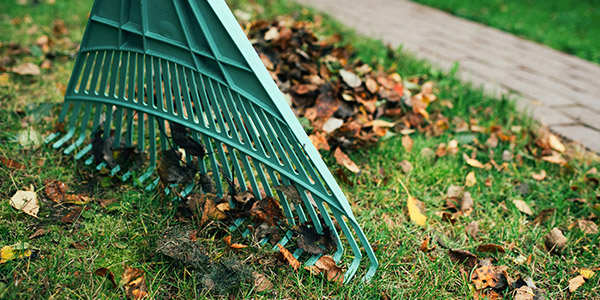Housing News
Fall Lawn Care Tips – 6 Steps to Take Now
November 7, 2018
Have you ever passed a neighbor's yard and found yourself green with envy over their lush, weed-free lawn? With a few adjustments, you too can have a yard just as beautiful come spring. It may be strange to think about this now when a canopy of leaves is just beginning to give your brown patches cover, but there are some steps you can take before winter that will benefit the overall look and health of your lawn.
The Grass Can Always Be Greener
Having a healthy lawn comes from knowing how to use the seasons to your best advantage. In most parts of the country, fall can be especially critical to growing an envy-worthy lawn for the following spring and summer. Here are some tips for how you can take your turf to a greener place starting today.
1. Let the grass grow taller
Mowing the lawn with the blade set too low speeds up the pace of water evaporation. Instead, set the blade higher to avoid harming the roots and causing browning at the surface. An additional benefit is the longer grass might block light for any germinating weeds.
2. Be strategic about watering
Local restrictions on water would seem to be an issue for lawns. However, deep and infrequent watering is better for grass than daily sprinkles. Grass only needs approximately one inch of water per month to remain healthy. Watering too frequently can weaken it.
3. Keep off the grass
Pick up litter, attend to pet droppings, and avoid parking on the lawn to keep your grass healthy. Keeping it clear of weeds and damaging pests also helps. One thing you may want to consider is not clearing away your grass clippings. They can help retain moisture and feed your lawn, as long as they don't form heavy clumps.
4. Stay sharp
A dull mower blade leaves grass vulnerable to disease. Grass with ragged, brown edges is the tipoff that you need to sharpen up. Depending on the size of your yard, you should be sharpening your blades at least twice each summer.
5. Use fall prep for the spring
Give your lawn a good cut and then aerate the shorter grass to let the fertilizer reach the roots more easily. Fertilizing in the fall also ensures your lawn has sufficient nutrients when it goes dormant during winter. The cooler fall air and higher dew points make it a good time for seeding bald areas.
6. Rake and rake again
While leaves do make good composting material for your garden areas, allowing them to linger on your lawn increases the risk of suffocating your grass. The bare patches that appear in the spring are often due to wet leaves that remain in place throughout the winter.
Surrendering Your Turf
In many parts of the country, conservation needs have led more homeowners to pull up their lawns and install alternatives. For those still seeking living groundcover, numerous options provide a green carpet but require minimal maintenance. Other materials used include woodchips, pavers, and gravel pellets to create a textured look. While these materials don't require mowing, they can fade or "escape" from their tracks and may need periodic replacement.
In some areas, homeowners are using synthetic turf that gives the near look and feel of grass. Some maintenance is still required, however, from repairs to fill in damaged spots to disinfecting and spraying to reduce static and odors.
Whether you go natural, synthetic, or vary grass with pavers and other decorative groundcover, a well-maintained yard not only enriches your home life, it adds to the curb appeal when it is time to sell. Also, when you get the maintenance right, there is no reason to ever feel lawn-envy again.





 Smart Moves Start Here.
Smart Moves Start Here.